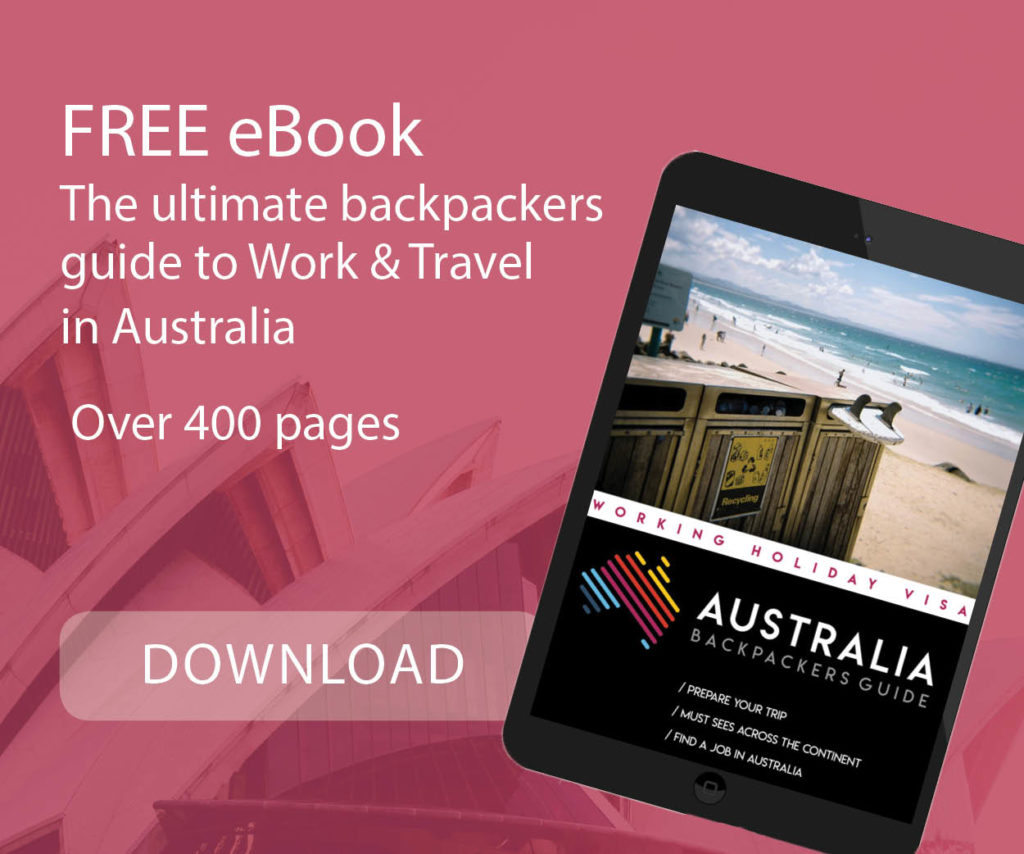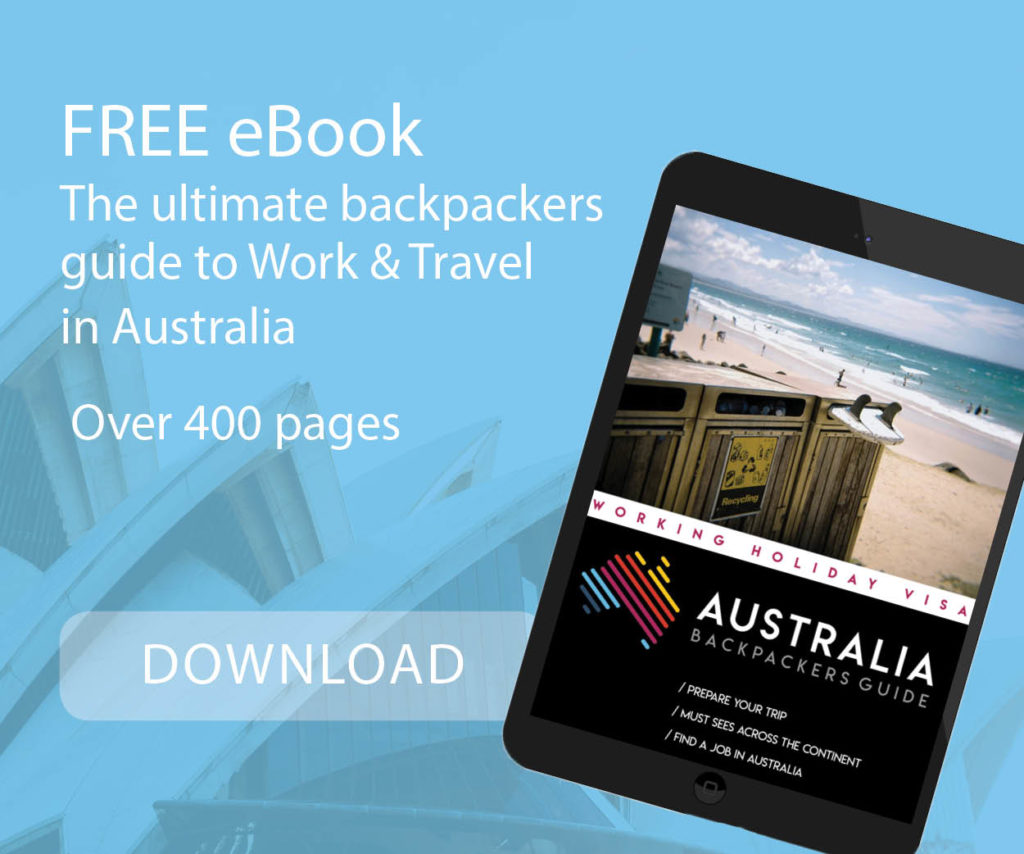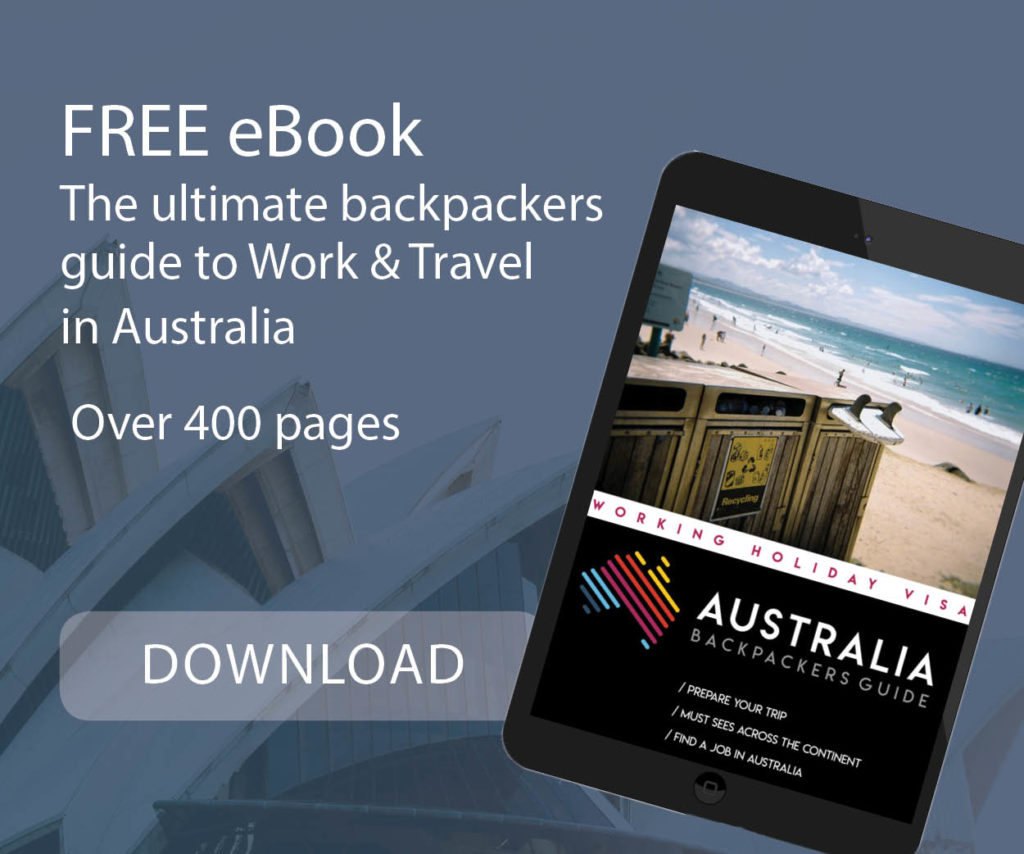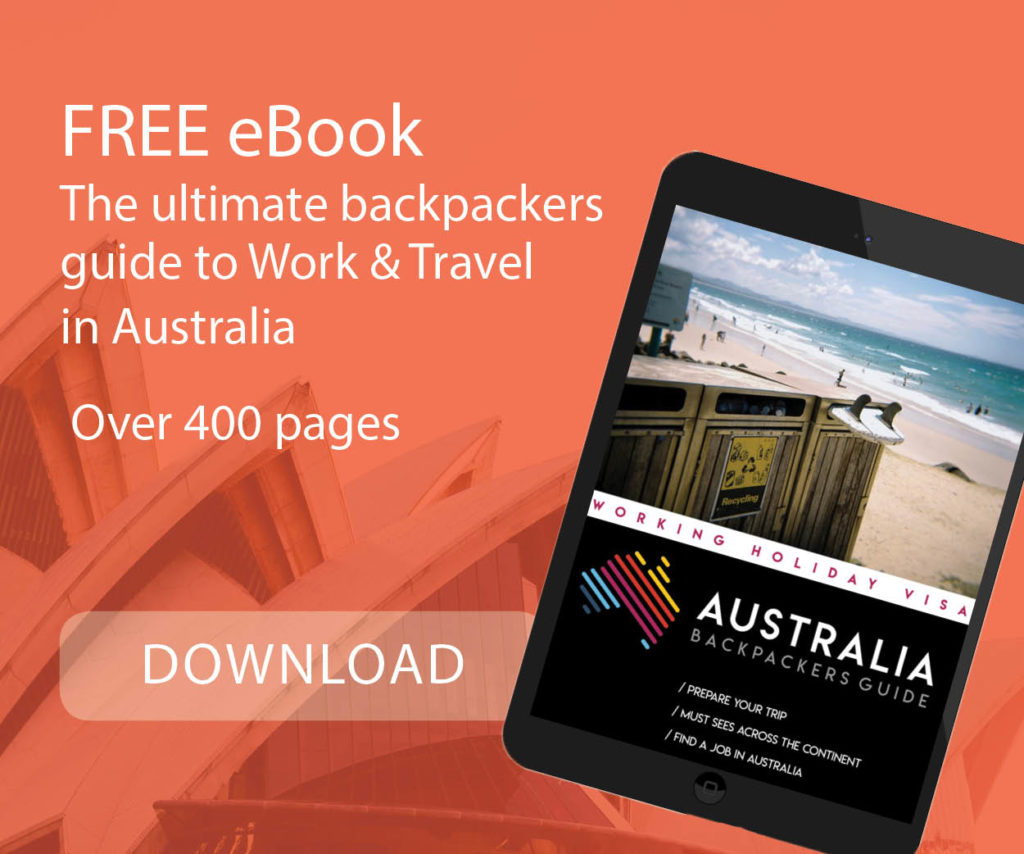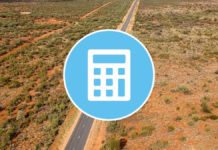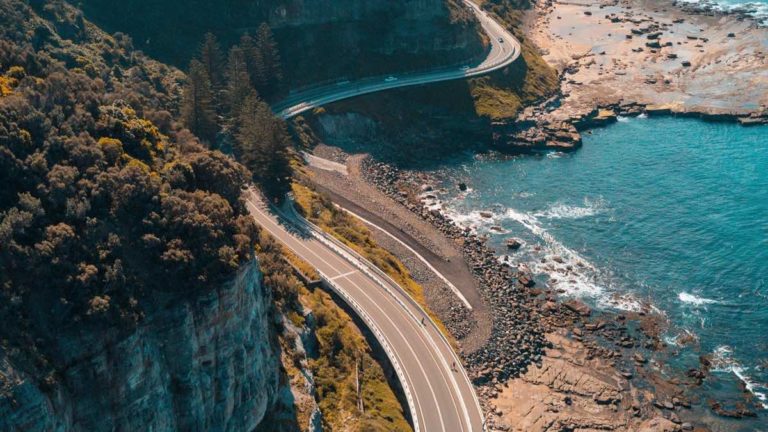
Going on a road trip in Australia can require a big budget, so it’s important to make sure you have enough savings before thinking about setting off. Depending on your goals and the kind of trip you want to go on, your budget will vary (whether you’re a tourist on holidays or a backpacker on a Working Holiday Visa). From fuel and campsites to food and data, here’s your one‑stop, state‑by‑state‑agnostic breakdown of realistic daily and monthly costs—plus top money‑saving hacks.
Table of Contents
Why take a road trip to Australia?
Australia offers unrivalled diversity, from the coral reefs of the Great Barrier Reef to the rainforests of Daintree and the vast desert expanses of the Red Centre. A road trip is the ideal way to discover the beauty and variety of this country, at your own pace.
What’s more, the country is very suitable for vanlife! There are plenty of places to sleep, lots of campsites, suitable rest areas… Most of the roads are well maintained and ideal for exploring the country. So go for it, you won’t regret it!
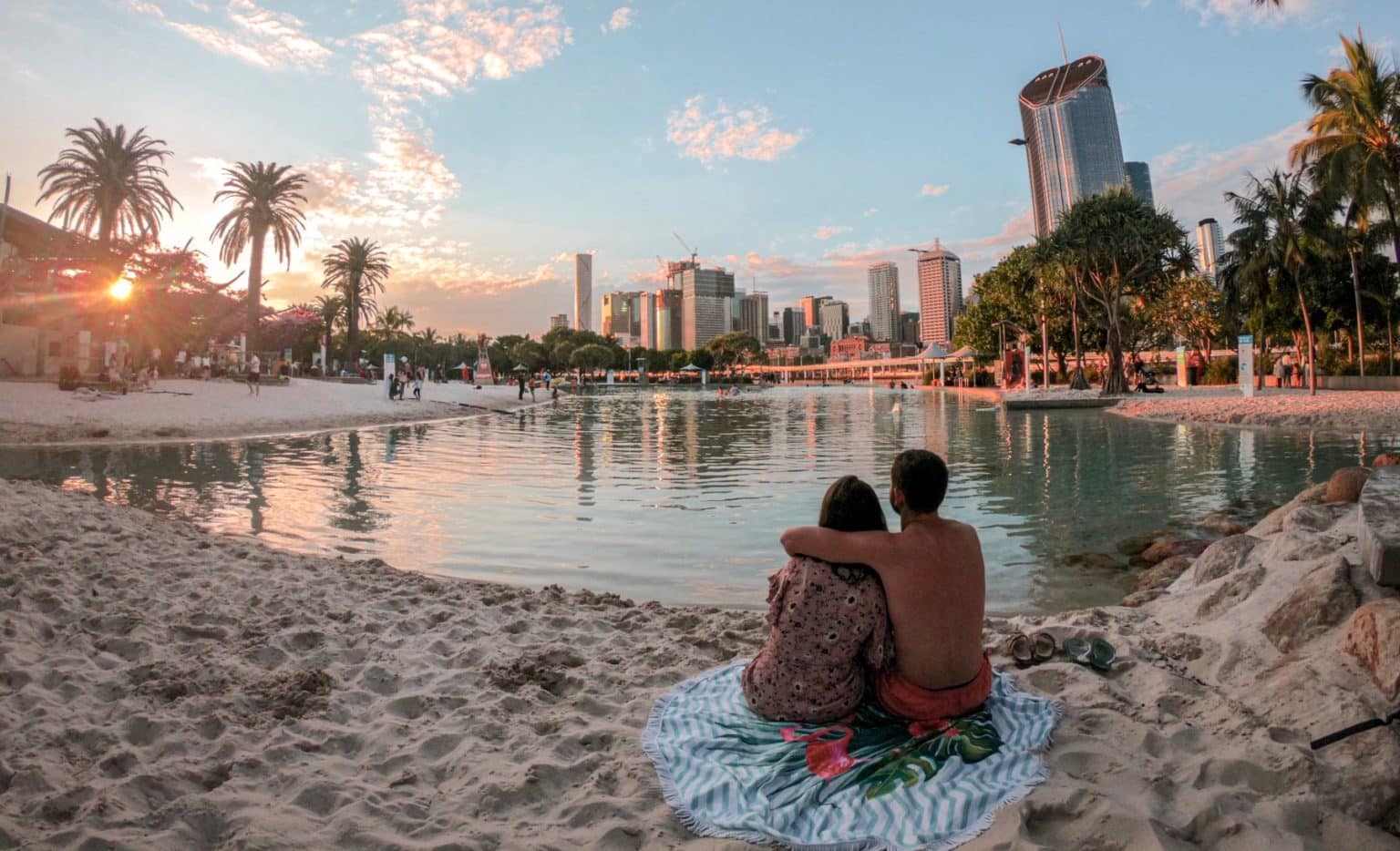
What budget should I plan for before going to Australia?
Working Holiday Visa or Tourist Visa costs
Your visa is the key to entering the country. Obtaining it allows you to buy your plane tickets and to take out health and/or travel insurance.
💰 The Working Holiday Visa (WHV) – subclasses 417 & 462 costs $650 per person.
It is valid for up to 12 months after it is granted (so you can choose a departure date up to one year later) and it allows you to travel Australia for 12 months. It is renewable twice under certain conditions.
A Tourist Visa is a better option if you plan to stay in Australia for less than 3 months. Getting a tourist visa is free (subclass 601).
Warning: Make sure you apply for your WHV or Tourist Visa on the Australian government website only.
Plane tickets
Spanning a distance of approximately 14,000 to 18,000 kilometers, the journey from Europe to Australia is a substantial one.
💰 The cost for a one-way ticket typically starts at around 800 EUR, while a round-trip fare with a stopover can be expected to be about €1700.
To secure the most economical fare, it’s advisable to book your plane tickets well before your intended departure date. Use online comparison services to scan for the best flight deals. Keep in mind that ticket prices can fluctuate based on the departure and arrival cities you choose, as well as the season and day of the week.
Your city of arrival can also influence the price of your plane ticket. For those planning a road trip without the intention to purchase a vehicle, comparing rental car prices is a must. Rates can differ significantly, for instance, when renting a vehicle from Sydney to Cairns as opposed to the reverse route. For potential buyers, pre-trip research on platforms like Facebook Marketplace and Gumtree can reveal where to find the most competitive deals on vehicles.
If your travel plans are flexible and you don’t have a set date for returning, consider opting for an ‘open’ return ticket. These tickets, which are often available through travel agencies, provide the flexibility to choose your return date at a later time, potentially saving you from change fees that airlines might impose. Additionally, some airlines offer ‘flexible’ tickets that allow changes without extra charges, which could be a prudent choice if your itinerary is not set in stone.
Travel Insurance
Travel/health insurance is a large but necessary expense for travellers.
💰 It will cost you around 400€ for one year. It covers your costs in the event of an accident, hospitalisation, repatriation or in the event of civil liability. Remember to read the terms and conditions carefully before signing the contract.
If you are leaving for less than 90 days, short-stay insurance is a better option. Budget around 100€ or $160 for a month’s coverage.
If you are travelling around the world, it’s strongly recommended to get insurance tailored to this kind of trip. Budget between €50 and €75 per month for decent round-the-world coverage (Chapka, AVI, SafetyWing, World Nomads, True Travellers, etc.). Cancellation insurance can also be useful, especially if you are travelling with your family. This type of contract guarantees reimbursement of cancellation costs for any sudden, unforeseeable event beyond your control.
Among others, SafetyWing policies provide different levels of coverage for all key areas while you are travelling. To get a quote, just enter your details below:
Note: As an affiliate, we receive a fee when you purchase an insurance from SafetyWing using this link. We do not represent SafetyWing. This is information only and not a recommendation to buy travel insurance.
🚐 5% Discount with Travellers Autobarn
Travellers Autobarn is offering a 5% discount to Australia Backpackers Guide readers with promo code GUIDEEN
Transportation Costs
Travelling via public transport
Long‑Distance Coaches
For long journeys and a certain level of comfort (air conditioning, comfortable seats, toilets, etc.), choose coaches like those from the Premier Motor Service or Greyhound companies.
Greyhound Australia Passes:
- East Coast Whimit from A$309 (7‑day), A$395 (15‑day) or A$475 (30‑day), unlimited travel between Melbourne–Cairns any direction
- National Whimit from A$449 for unlimited access to Australia’s entire 180+ stop network
- Commuter Pass (e.g. Sydney–Canberra, Brisbane–Toowoomba) from A$299
- Early Bird fares (book ≥ 14 days ahead) unlock discounts up to 30% on point‑to‑point tickets.
Premier Motor Service:
- Express Tickets: daily coaches on three main corridors (Eden–Sydney, Sydney–Brisbane, Brisbane–Cairns). Fares vary by route, typically A$20–100 one‑way for adults.
- Value Passes (hop‑on/hop‑off over 1–6 months):
- From A$220 (3‑month Byron Bay ↔ Airlie Beach)
- A$255 (1‑month Sydney ↔ Cairns)
- Up to A$400 (6‑month Sydney ↔ Cairns)
Short‑Hop & Urban Buses
To travel short distances (for example to reach your coach), use public buses. You’ll find them in all the states of Australia and they have a pretty good network. All major cities offer integrated tap‑on/tap‑off cards—no cash. Off‑peak discounts up to 30% on weekends/public holidays in many cities.
👍 Use Transit or Moovit apps for real‑time departures and route planning.
Taking the train
Australia’s rail network is nowhere near as good as its road network and will only be suitable for certain routes. However, the train is generally faster than the bus and the price is very similar. In major cities, in particular, you can use the same public transport card to take the bus, tram or train. Here you can check out the train map.
Iconic Long‑Haul Trains:
| Train | Route | Duration | From (Red/Standard) |
|---|---|---|---|
| The Overland | Adelaide ↔ Melbourne | ~ 10 hrs day | A$145 (Standard) |
| The Ghan | Adelaide ↔ Darwin (via Alice Springs) | 3 days/2 nights | A$2 590 (Gold Twin) |
| Indian Pacific | Sydney ↔ Perth (via Adelaide) | 4 days/3 nights | A$2 790 (Gold Twin advance) |
Van / campervan rental
The cost of a campervan rental in Australia varies depending on various criteria.
- The time of year: It is way more expensive in summer than in winter. It is the same with school holidays and public holidays.
- The length of your stay: It goes without saying that the longer your trip, the more you’ll have to pay overall. Remember to book in advance to save money.
- The route: If you are arriving or departing from a small town, fares may be higher. Also, if you do not return the vehicle to the same place of departure, an additional tax may be added (one way fee).
- Insurance: The average cost is $30/day. But be aware that if you rent a van for more than a month and a half, you will only pay for the insurance for the first 50 days.
💰 Campervan rental: from A$70/day (2‑berth, low season) to A$150+/day in peak summer.
This rate includes unlimited mileage and 24-hour assistance under conditions.
Read more in our article: Cheap campervan rentals in Australia – How to get a good deal or use the Motorhome Republic comparison tool below to find the best deals:
Buying a vehicle
Buying a vehicle is a good idea if you plan to stay longer than 3 months.
Prices vary according to the model, the brand, supply and demand, the time of year but also the city of arrival. In low season (between April and October) prices are lower because there are more offers than requests. In high season (between October and April), prices are higher because there are many requests and fewer offers.
- For a converted car/station wagon, count $4,000 second-hand
- For a fitted van, budget between $8,000 and $12,000.
- For a converted 4×4, count between $8,000 and $10,000.
- Registration & Insurance: Budget A$600–1 000/year for rego + CTP, plus A$800–1 200 for comprehensive cover.
Read more: Choosing and buying a vehicle
🚗 GREAT DEAL : Your customized vehicle available as soon as you arrive in Australia !
If you’re planning to go on a Road Trip as soon as you arrive in Australia, the best option is to go through backpackercars.com. They offer all types of vehicles for sale (cars, vans, and 4x4s) and customize them according to your needs. The advantage is that all mechanics are checked, the paperwork is in order, and you can leave with it as soon as you arrive in Australia.
📍 Vehicles available in Sydney, Melbourne, and Perth
📝 Avoid all the paperwork
👨🔧 Avoid unpleasant mechanical surprises with a reliable vehicle
🚗 Pick up your vehicle as soon as you arrive in Australia
🚨 BONUS : 1 year of free assistance (Roadside Assistance) with our PROMO CODE : BACKPACKERS
Maintenance & Repairs
Maintenance costs depend on the type of vehicle, how old it is, its daily maintenance and the number of kilometres driven.
- Oil change & service: A$150–300
- Tyre replacement: A$200–400 for a set of four
- Roadside assistance membership: A$100–150/year
Fuel Prices
- National average: 179.3 cents per litre (A$1.79/L) for unleaded petrol as of April 6, 2025 (Global Economic Data).
- Outback premium: Expect +20–40 cpl in remote areas.
- Consumption example: A campervan averaging 12 L/100 km costs ~A$21.50 to drive 100 km at national average rates.
👍 Tip: Use apps like GasBuddy or My NRMA to track real‑time prices and fill up in major centres.

Accommodation on the Road
Caravan Parks & Campsites
Campsite fees are charged per vehicle and not per person. This allows camping expenses to be shared between the driver and the passengers.
- Unpowered site: A$20–40/night. This covers the various facilities available at a campsite (showers, toilets, barbecues, etc.).
- Powered site: A$30–60/night
- Cabins: A$80–120/night
- Free camping: Use apps like WikiCamps or CamperMate for low‑cost bush camps.
👍 Tip: Buy a national parks pass (A$70–160/year) if you plan many state‑park stays—it often cuts camping fees by 50%.
Hostels & Work‑for‑Stay
Hostels are more expensive in big cities. The price of a room will vary according to the number of beds in it. The fewer there are, the higher the price. If you have a smaller budget, opt for mixed rooms and dormitories with 4 to 10 beds. Private rooms offer similar prices to an entry-level hotel. On average, the price of a night in a hostel is $40.
- Dorm bed: A$30–40/night in regional towns
- Work exchange: 3–5 hrs/day in exchange for free bed & breakfast (search Worldpackers, Workaway).
Airbnb / Hotel
Housing prices for an Airbnb are similar to those in Europe. The price depends on the location and the quality of the accommodation you wish to book. The price decreases if you book for a longer period. Rooms are limited to two people. It is therefore possible to divide the costs by two.
💰 For one night, a low-cost Airbnb is around $80.
Hotel is the most expensive accommodation option. Prices depend on the quality of the hotel and its facilities (swimming pool, spa, restaurant, etc.). For a room, prices are around $100 per night. These prices may also vary depending on the season and the tourist influx.
Housesitting
House sitting is an increasingly popular practice in Australia. It allows travellers to stay for free in a home while the owners are away. In exchange, the housesitters take care of the usual household chores, and sometimes pets. It’s an excellent way to significantly reduce accommodation costs during a stay in Australia. With growing demand, it is relatively easy to find housesitting opportunities, especially if you are flexible with dates and locations.
💡 To find Housesitting opportunities in Australia, head over to the city/town Facebook groups! You’ll be able to post an ad or reply to certain publications if you’re interested.
Another alternative: specific websites such as PawShake or MadPaws!
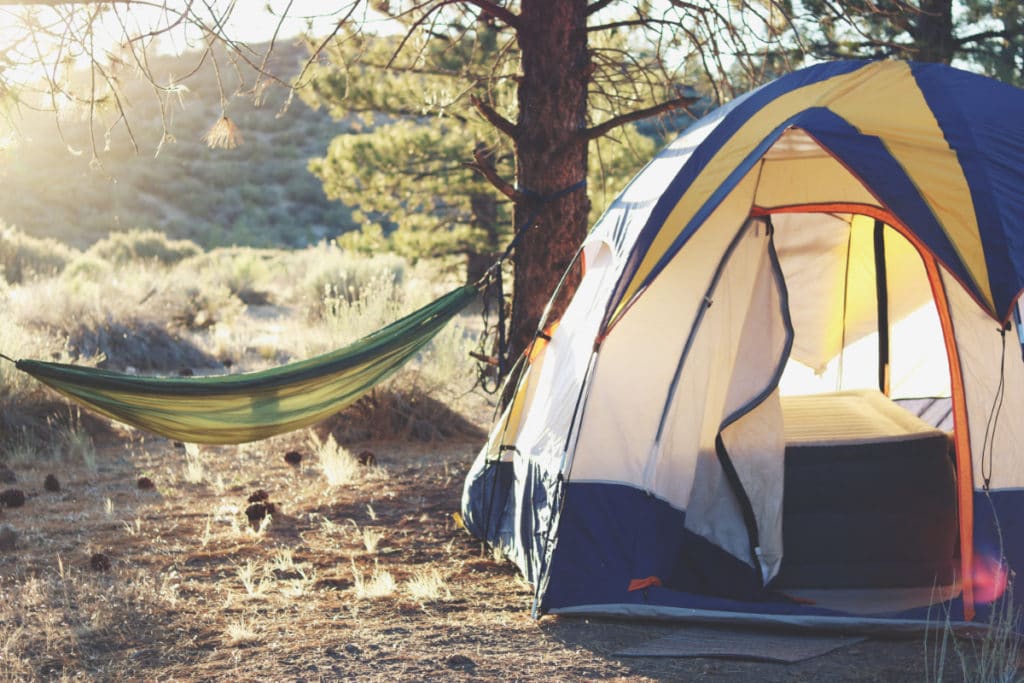
Food & Groceries budget
Self‑Cooked Meals
- Weekly groceries: A$100–140 (Aldi, Coles, Woolworths)
- Budget staples: Pasta A$1/500 g; Tuna A$1/100 g; Bread A$2.50; Veg & fruit markets often 20–50% cheaper near closing.
Eating Out
- Casual meal: A$20–30
- Pub meal + drink: A$30–40
- Weekly restaurant budget: ~A$60–80 (2 meals)
- Monthly total: ~A$600 if you cook 5×/week and eat out twice.
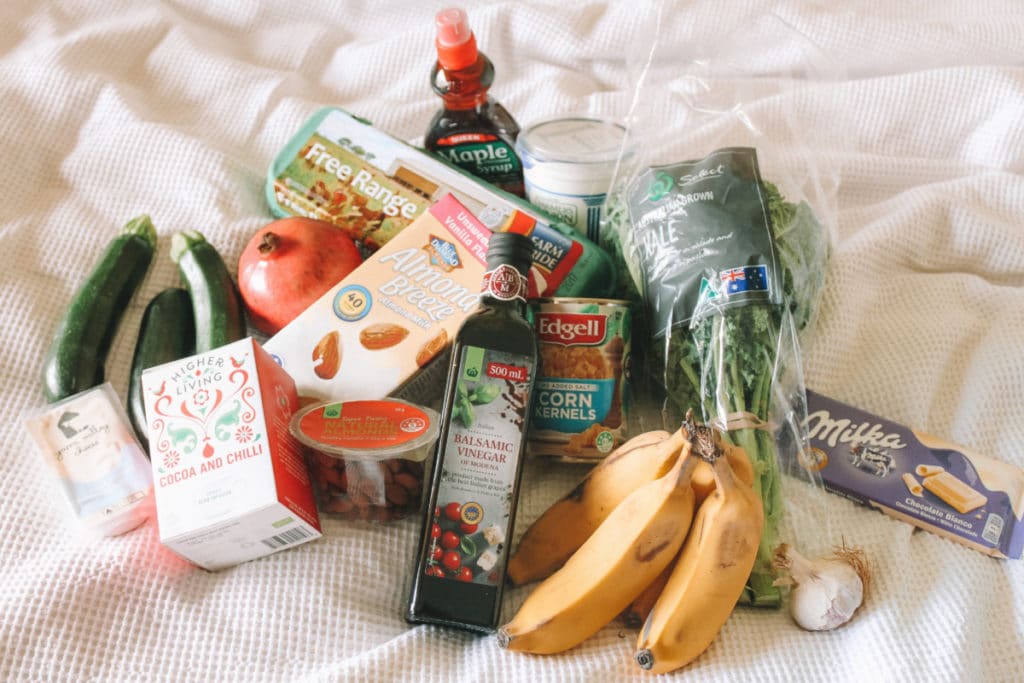
Activities & Tours
Free & Low‑Cost
- National parks: Many are free; some charge A$10–20 entry.
- Beaches, hikes, town walks: Free.
- DIY snorkel gear hire: A$15/day.
Paid Tours (2025 prices)
| Activity | Cost (AUD) |
|---|---|
| Surfboard rental (2 hrs) | A$25 |
| Scuba dive (guided) | A$280 |
| Skydiving (14 000 ft) | A$330 |
| Fraser Island (K’gari) 2‑day tour | A$500 |
| Whitsundays boat + snorkel (1 day) | A$260 |
| Kakadu entry (Nov–May / Jun–Oct) | A$25 / A$40 |
Going out & activities in cities
In the city, the main activities you will be doing are most likely visiting parks and museums, shopping and going out to bars and nightclubs. Going out and museums will make up the bulk of the budget. In some cities like Sydney, Adelaide, Cairns and Brisbane you can go for a swim or do water sports. There is no need to budget for sports.
Price examples:
- 1 cocktail in a night club: $16
- 1 schooner in a bar: $10
- Museum admission: free (temporary exhibitions at an additional cost of $10)
- Admission to a zoo: around $40
Mobile & Connectivity
In Australia, 3 operators share the majority of the market: Telstra, Optus and Vodafone. Telstra is the operator that covers most of the country (98%) and has a network in some remote areas. This will surely be the best choice for your road trip if you plan to get away from the big cities!
- Optus Prepaid: 40 GB for A$35/28 days; 60 GB for A$45; 80 GB for A$55
- Telstra Prepaid: ~A$65 for 60 GB (best regional coverage)
- Budget MVNOs (Amaysim, Kogan, TPG): 50 GB for A$20–30
Don’t hesitate to consult our article on Phone Plans in Australia for more information!
Evaluate your road trip budget
It is important to note that a road trip budget in Australia will depend on the number of kilometres travelled and the duration of your trip. If you are travelling for a year, you will probably spend some days driving 400 km, and others without driving anywhere. If you are on vacation for just a few days or weeks, you will probably travel more kilometres over a short period.
Finally, depending on the number of people you are travelling with, the tourist activities that you want to carry out (trips to the Great Barrier Reef, scuba diving, skydiving etc) your budget will also have to be readjusted.
Facebook survey: weekly road trip budget
We did a survey of a backpacker’s weekly road trip budget in Australia. This survey was conducted with a sample of 92 people.
The majority of respondents spend an average of $300 to $400 per week. About 20 people managed to spend less than $300 a week. Conversely, around twenty people spend more than $600 per week. The high average is therefore between $300 and $600 and the low average between $300 and $400.
Budget calculator
The average budget varies according to many criteria. It is therefore important to adjust it according to your route, your interests, mode of travel etc.
The average estimate for a road trip per month
The average estimate for a one-month road trip. In order to give an “average”, we have based the rates below in the following graph:
- Profile: backpacker couple
- Vehicle: basic campervan for 2 people
- Type of travel: year-long trip
- Total Budget: approximately $2000
Travel budget for an organised tour
If you are worried about organising a road trip, rest assured: you can book an organised tour and avoid the stress. Some cover a large part of the country and others focus on one or more routes. Some of them are guided, in English.
Here are some examples of popular tours:
- National tour around the most iconic places in Australia: Sydney, Uluru, Kings Canyon, Glen Helen, Alice Springs, Darwin, Kakadu National Park, Katherine, Darwin, Cairns (with international flight), count 20 days as well as a budget of around €4,000 per person.
- For a road trip up the East Coast from Sydney to Cairns with international flight and vehicle rental, count about 20 days and 2,500€ per person.
- For a road trip on the west coast from Perth to Exmouth with international flight and vehicle rental, count around 20 days and €2,500 per person.
Money‑Saving Hacks
Saving on fuel
For those travelling a lot, fuel is probably going to be your biggest expense. Even if the cost is usually lower than in Europe for example, fuel price varies a lot in Australia. Big cities such as Sydney are where you will find the best value. As soon as you start going into the outback, prices increase a lot. They can even double in some isolated areas.
To save money, always keep an eye on the fuel prices at service stations you’re passing or stopping at, even if you’re not out of gas. If you find a service station that’s cheaper than the others, you can fill up your tank even if it’s only half empty, or use an extra cannister to stock up for when you need it.
Get a Woolworth or a Coles shopping card, because their affiliated stations offer 4cents/L discount when you shop at their supermarket. These discounts are usually valid for a month, and you will save $2 to $4 per refuel!
Saving on food
Food is a huge part of your budget. To avoid spending too much, shop in big supermarkets such as Aldi (the cheapest), Coles or Woolworths. Avoid corner shops when you can as they are much more expensive.
Go for the supermarket brands when shopping, as they are often cheaper than other brands and still good quality.
Try to shop in big cities; prices are much higher in smaller towns. Look for discounts, offers, etc. and keep your receipts to take advantage of other discounts (alcohol, fuel, etc.).
In cities, you will also find markets where fruits and veggies will be cheaper than in supermarkets. If you go right before closing time, you might even benefit from huge discounts.
Finally, to make some cheap meals go for:
- Pasta (500g/$1)
- Tuna (100g/$1)
- Sliced bread (1 packet/$2.50)
- Noodles (x5/$1.50).
Saving on equipment
Shops such as Kmart, Target, Super Cheap Auto and BigW sell equipment for very cheap. You will find everything you need to go camping or equip your car.
You can also buy second hand via websites such as Gumtree, one of the most popular second-hand websites. Check on Marketplace on Facebook as well. These are a great way to get ready for a road trip while benefiting from extremely good deals.
Savings on daily life
On a road trip, comfort can be lacking and it can be tempting to spend every night on a campsite, where you have access to facilities like showers, toilets, WiFi etc. Although campsite fees are often pretty low, it can quickly add up. If you like a bit of adventure, we advise you to look for free campsites. Free spots to spend the night listed on apps like WikiCamps and CamperMates.
Along your road trip route, it will be relatively easy to find free amenities: beach showers, public toilets, WiFi, etc. Visitors Centres in towns and cities will be able to provide you with information.
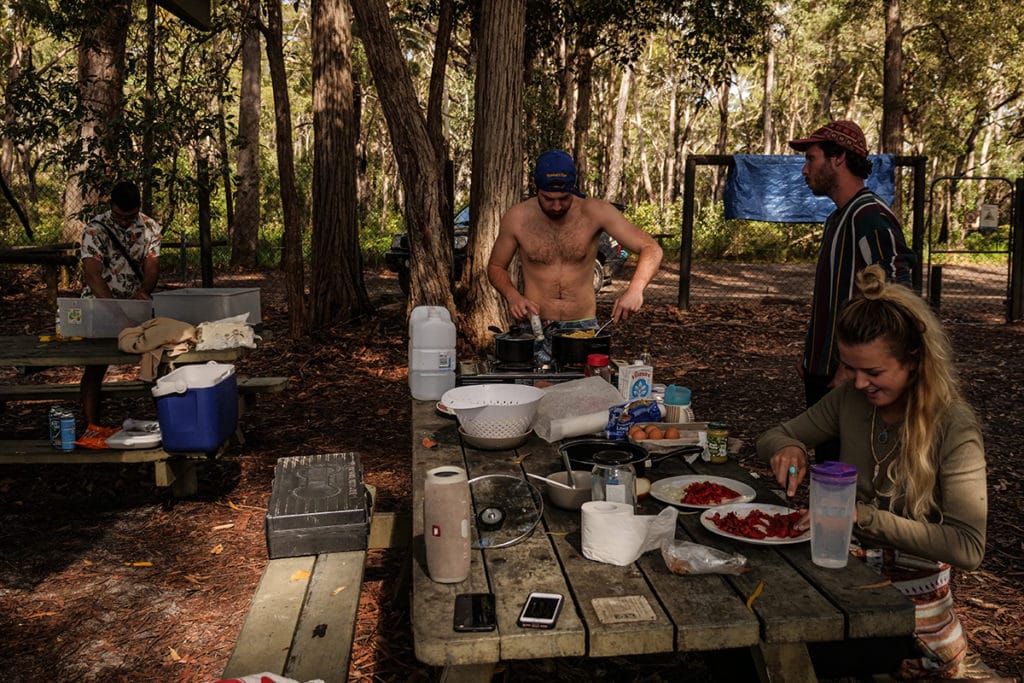
Saving on extras
When you need to renew your wardrobe, buy some kitchenware or new books you should try second-hand shops. Vinnies, the Salvation Army, Red Cross, etc. offer amazing deals! T-shirts are usually under $5, shoes around $5 and pants around $8 to $10. Sometimes there is even still a tag on the items! Camping equipment, board games, work clothes and more are also available at unbeatable prices!
These second-hand shops can be found in every town in Australia, even the smallest ones where the prices are the cheapest.
Near their homes, locals sometimes leave mattresses, camping gear or other equipment that they want to get rid of for free. Watch out for garage sales!
FAQs
It all depends on the region. The north is ideal in winter (May to September), while the south is preferable in summer (December to February).
Cars use less fuel than motorhomes, but you may have to pay for accommodation. Weigh up the pros and cons depending on your itinerary.
A road trip to Australia is an unforgettable adventure. With careful planning and a well-managed budget, you can explore this magnificent country without breaking the bank. Follow our advice and save! Get ready, pack your bags and set off to discover the land of the kangaroos!
The decision to rent or buy a van or car for a road trip in Australia depends on a number of factors, including the length of your trip, your budget, your personal preferences and your risk tolerance. If you’re planning a long trip (more than 3 months) then it makes more sense to invest in a vehicle.
More advice for a road trip in Australia:





